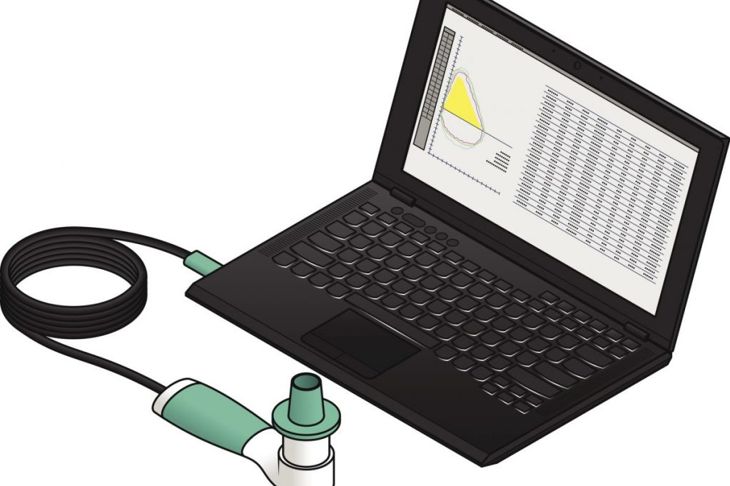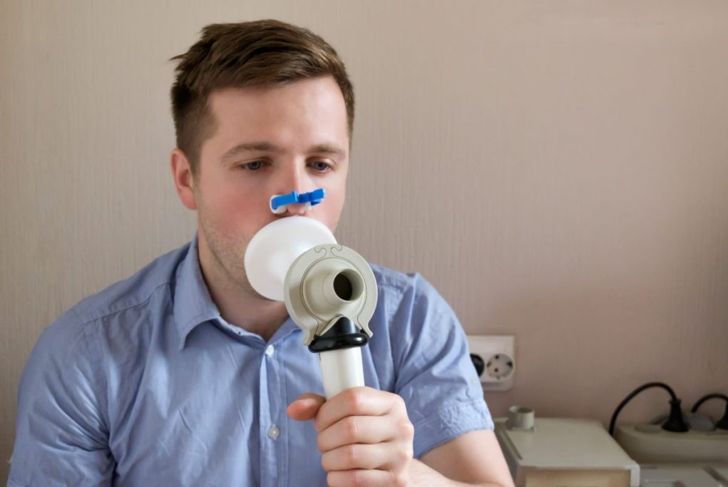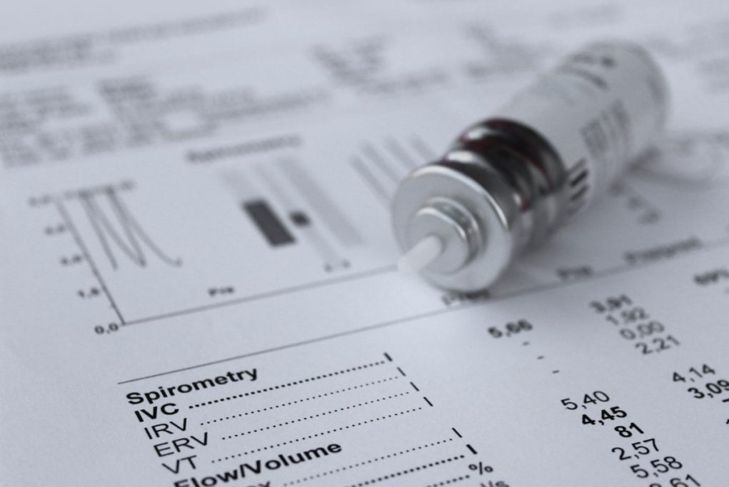Spirometry measures how well your lungs are working, and doctors often use it in the diagnosis of respiratory diseases. If you’ve never had spirometry, you may have questions about what it is, how you need to prepare for it, and what the results mean.
What is Spirometry?
Spirometry measures how well your lungs are working by measuring how much air you can inhale, how much air you can exhale, and how fast you can breathe out. The test can help diagnose respiratory conditions and monitor how well a specific treatment is working. In addition, it can determine the progression and severity of respiratory conditions.
Why is Spirometry Done?
Spirometry helps your doctor diagnose lung conditions such as asthma, chronic obstructive pulmonary disease (COPD), emphysema, interstitial pulmonary fibrosis, and chronic bronchitis. If you have a chronic respiratory condition, your doctor may occasionally use spirometry to monitor the effectiveness of your current treatment. Spirometry may also be utilized before surgery. The test can help your surgeon decide if your lungs are working well enough to withstand an operation.
What Are the Risks of Spirometry?
Spirometry is typically a safe test. Exhaling hard and fast can make you cough or feel dizzy or tired. You may also experience shortness of breath and chest pain or tightness. In rare cases, the test can trigger severe shortness of breath. If you experience any discomfort during or after spirometry, let your technician know.
How Do You Prepare for Spirometry?
Wear loose clothing, as tight clothes can interfere with your ability to breathe. Don’t eat any big meals before the test. Refrain from smoking for six hours before a spirometry test. Follow your doctor’s instructions regarding whether or not you should take your medications before the test. For instance, your doctor may tell you not to use your short-acting inhaler in the preceeding six to eight hours.
How is a Spirometry Done?
You will be able to sit during the test. A nose clip may be placed on your nose to ensure you’re only breathing through your mouth during the test. You’ll inhale deeply and exhale as hard and as fast as you can for several seconds into a tube connected to a spirometer. You will inhale deeply again before removing the tube from your mouth. Your doctor may give you an inhaled medication to open your airways and repeat the test to determine if the medication improved your ability to breathe. Spirometry tests are generally repeated three times to ensure consistent results. If your results vary too much, the doctor may run the test again.
How Long Does Spirometry Take?
Spirometry is typically repeated three times and should not take more than 15 minutes. If your results vary too much, the technician may want you to repeat the test. Your doctor may give you an inhaled bronchodilator to open up your airways after your initial spirometry. You’ll need to wait 15 minutes before you take the test again, while the medication takes effect. Your doctor will compare the results of the two tests to determine if the medication improved your ability to breathe.
What Does Spirometry Measure?
Spirometry measures two main values: forced vital capacity (FVC) and forced expiratory volume (FEV). FVC refers to the largest amount of air you can forcefully expel after a deep inhalation. FEV refers to the amount of air you can forcefully breathe out in one second. Both measures help determine how well your lungs are functioning.
What Do the Results of a Spirometry Mean?
Normal results of spirometry are calculated based on your gender, age, height, and race. Your doctor calculates your predicted result before you take the test. If your score is 80% or more of the predicted value, your test is considered normal. If your FVC is lower than normal, it indicates something is affecting your ability to breathe. The FEV score helps determine how severe your breathing problem is.
Who Should Not Take a Spirometry Test?
Tell the doctor if you have had a heart attack within the past month, if you had recent abdominal, heart, or eye surgery, have tuberculosis, or a recently collapsed lung. If any of these factors apply to you, the doctor may want to postpone the test until you are fully healed. Spirometry is dependent upon patient cooperation. Therefore, it’s not an appropriate test for children too young to understand and follow instructions and is not usually performed on children younger than six. The test is also inappropriate for heavily sedated or unconscious individuals. There are other lung function tests available for young children and people who are unconscious.
What Happens After Spirometry?
If your spirometry results are abnormal, your doctor may want to do other tests, such as sinus and chest x-rays and blood work, to help diagnose your lung condition. In addition, your doctor may test for conditions making your respiratory disease worse, such as heartburn, sinusitis, and allergies. Your doctor may prescribe inhalers or other medications to help improve your ability to breathe. He or she may conduct periodic spirometry tests to determine whether the treatment is working.

 Home
Home Health
Health Diet & Nutrition
Diet & Nutrition Living Well
Living Well More
More




















